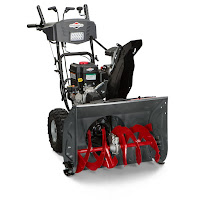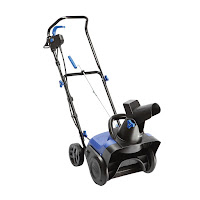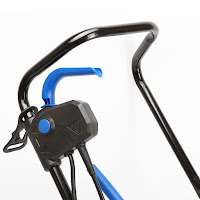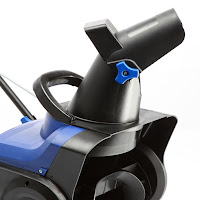 |
| Ad >>Click here to buy Briggs & Stratton 1696619 Dual Stage Snow Thrower at a LOW PRICE online<< |
The gas-powered Briggs & Stratton 1696619 Snow Thrower is equipped with a push-button electric start (110v plug-in) for effortless starting or alternatively you can pull-start the machine.
This snow thrower operates in temperatures as low as -20 degrees F and features free-hand control that enables you to drive the machine with one hand while using the controls with your other hand for ease of use.
This snow thrower operates in temperatures as low as -20 degrees F and features free-hand control that enables you to drive the machine with one hand while using the controls with your other hand for ease of use.
 |
| Briggs & Stratton 1696619 Dash-mounted controls |
The Briggs & Stratton 1696619 Snow Thrower’s gearbox is made with durable aluminum for long-life. There are 5 forward and 2 reverse speeds and a 12” steel scroll auger.
The Briggs & Stratton 1696619’s reversible steel skid shoes plow through the snow with ease, making the machine easier to maneuver with less effort from you
 |
| Briggs & Stratton 1696619 180 degree chute rotation |
Additional features of the Briggs & Stratton 1696619 Dual Stage Snow Thrower include single LED headlights, 14” by 4” tires, synthetic oil for easy starting,
Ad >>Click here to buy the Briggs & Stratton 1696619 Dual Stage Snow Thrower at a LOW PRICE online<<
Let’s take a look at the features and specifications in detail of the Briggs & Stratton 1696619 to help you decide if it’s the best snow thrower for you:


